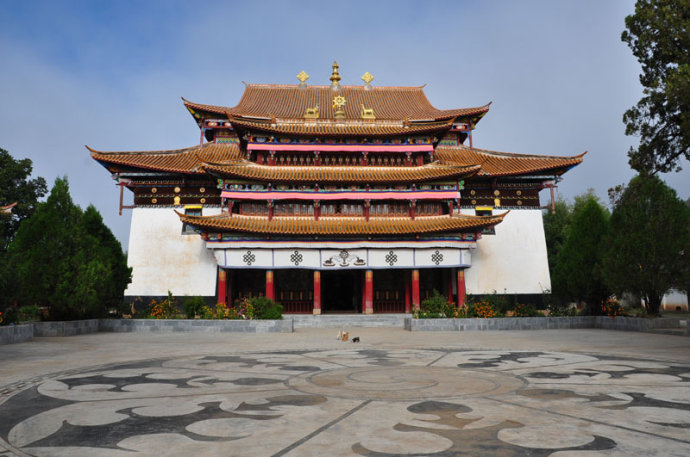Fixed Dimensions
Images with fixed dimensions
images\Nxiangce/35x35/1.jpg
-
Zhamei-Monastery-in-Yongning-Town-Lijiang

Without doubt the Yongning region is rich in cultural heritage and is a prime location for the development of tourism. My concern is that with the development of the new expressway that the tourism resources will continue to be focused in and around Lugu Lake. This was also a concern of some of the local officials I spoke to during this visit, but they argued that with the increased influx of tourists it would become possible to channel resources towards other areas. Some may also argue that concentrating the ‘harmful’ effects of mass tourism in a few locations is more desirable than doing so across an entire region. In this way, they hold, local cultures can still persist reasonably undisturbed. The problem is, however, that rapid social and cultural change is happening even in the absence of mass tourism. And quite frankly, many local people outside the tourist zones also have the right and desire to improve their living standards (and gain better access to health care and education for starters). There are a few local NGOs and organisations attempting to deal with these issues, but it seems no one is really prepared for the even greater influx of tourists that is about to begin.
From my perspective the area around Yongning would be the perfect location for a number of small-scale, community based, ecotourism projects. Yongning has a very ancient history, as the presence of the Zhameisi Temple suggests. It was also an important staging post for horse/mule caravans in the region (connecting as it does Yunnan, Sichuan and Tibet, including in the past the ancient neighbouring lama kingdom of Muli of which Joseph Rock wrote about a number of times). Mules and horses are still very important beasts of burden in the area and there is a large horse and mule fair (骡马会) every year in November (which I hope to visit this year). A local Mosuo saying goes: ‘To get rich the Han rely on selling land, to get rich the Mosuo rely on raising horses and mules’ (汉人发财靠买土地,摩梭人发财靠养骡马). The caravans of the Mosuo were very famous. Traditionally it was the male members of the household who engaged in this activity (but not exclusively). It is recorded that during the 1920s and 1930s, when the caravan trade in the area was particularly active, that in addition to trading in Yunnan, Sichuan and Tibet, many Mosuo caravans also made their way to Burma (Myanmar), Nepal and India. As you can see, a wealth of material to explore and a rich source of important work on cultural heritage and community development to be undertaken. Now it is just a matter of finding more time and resources. A final thanks to Latami for his support and encouragement.

-
Summary
Kunming-Dali-Lijiang-Luguhu Lake-Shangri La
Summary
US$1113
-
Summary
Lijiang-Ninglang-Lugu Lake-Lijiang-ShangriLa-Kunming
Summary
US$1576
-
Summary
Lijiang-Ninglang-Lugu Lake-Lijiang
Summary
US$277
-
Summary
Lijiang-Lugu Lake-Yongning-Zhuangzi-Fengke-Baoshan-Daju-Tiger Leaping Gorge-Shangrila
Summary
US$40
-
Summary
Lijiang-Lugu Lake-Grassland-Tongtian River-Kawa village-Lusi Grassland-Kasi village-Chonggu Monastery-Daocheng-Litang-Kangding-Chengdu
Summary
US$40


